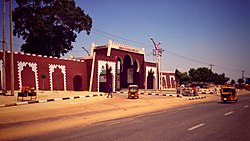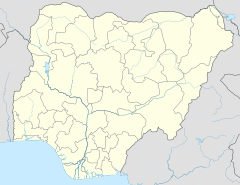
Kano is a city in northern Nigeria and the capital of Kano State. It is the second largest city in Nigeria after Lagos, with over ten million citizens living within 449 km2 (173 sq mi). Located in the Savanna, south of the Sahel, Kano is a major route of the trans-Saharan trade, having been a trade and human settlement for millennia. It is the traditional state of the Dabo dynasty who have ruled as emirs over the city-state since the 19th century. Kano Emirate Council is the current traditional institution inside the city boundaries of Kano, and under the authority of the Government of Kano State.
The Kano Chronicle is an Arabic-language manuscript that lists the rulers of Kano.

Kano State is one of the 36 states of Nigeria, located in the northern region of the country. According to the national census done in 2006, Kano State is the most populous state in Nigeria. The recent official estimates taken in 2016 by the National Bureau of Statistics found that Kano State was still the largest state by population in Nigeria. Created in 1967 out of the former Northern Region, Kano State borders on Katsina State to the northwest for about 210 km, Jigawa State to the northeast for 355 km, Bauchi State to the southeast for 131 km, and Kaduna State to the southwest for 255 km. The state's capital and largest city is the city of Kano, the second most populous city in Nigeria after Lagos. The incumbent governor of the state is Abba Kabir Yusuf. He was sworn in on 29 May 2023.

Ado Bayero CFR, LLD, JP was the Emir of Kano from 1963 to 2014.

Amina was a Hausa historical figure in the city-state Zazzau, in what is now in the north-west region of Nigeria. She might have ruled in the mid-sixteenth century. A controversial figure whose existence has been questioned by some historians, her real biography has been somewhat obscured by subsequent legends and folk tales.

The Bayero University Kano (BUK) is a university situated in Kano, Kano State, Nigeria. It was founded in 1975, when it was renamed from Bayero University College and upgraded from University College to University. It is the first university in Kano State, North-western Nigeria.

Jukun are an ethno-linguistic group or ethnic nation in West Africa. The Jukun are traditionally located in Taraba, Benue, Nasarawa, Plateau, Adamawa, Bauchi and Gombe States in Nigeria and parts of northwestern Cameroon. They are descendants of the people of Kwararafa. Most of the tribes in the north central of Nigeria trace their origin to the Jukun people and are related in one way or the other to the Jukuns. Until the coming of both Christianity and Islam, the Jukun people were followers of their own traditional religions. Most of the tribes, Alago, Agatu, Rendere, Goemai in Shendam, and others left Kwararafa when it disintegrated as a result of a power tussle. The Jukuns are divided into two major groups; the Jukun Wanu and Jukun Wapa. The Jukun Wanu are fishermen residing along the banks of the river Benue and Niger where they run through Taraba State, Benue State and Nasarawa State. The Wukari Federation, headed by the Aku Uka of Wukari, is now the main centre of the Jukun people.
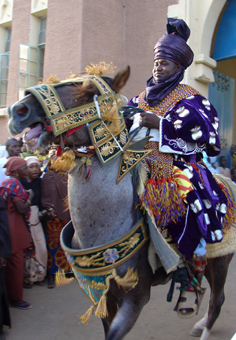
The Durbar festival is an ancient traditional annual Hausa; cultural, religious and equestrian festival, celebrated as a core part of the Arewa Hausa culture. Durbar has existed for centuries and is as an essential part of Hausa kingdom and Hausa tradition. Durbar is a paramount part of Hausa cultural rites, tradition and history and the Hausa's are renowned in history as ancient horsemen and warriors of the Sahara and the Sahel.

The Hausa are a native ethnic group in West Africa. They speak the Hausa language, which is the second most spoken language after Arabic in the Afro-Asiatic language family. The Hausa are a culturally homogeneous people based primarily in the Sahelian and the sparse savanna areas of southern Niger and northern Nigeria respectively, numbering around 86 million people, with significant populations in Benin, Cameroon, Ivory Coast, Chad, Central African Republic, Togo, Ghana, as well as smaller populations in Sudan, Eritrea, Equatorial Guinea, Gabon, Senegal, Gambia. Predominantly Hausa-speaking communities are scattered throughout West Africa and on the traditional Hajj route north and east traversing the Sahara, with an especially large population in and around the town of Agadez. Other Hausa have also moved to large coastal cities in the region such as Lagos, Port Harcourt, Accra, Abidjan, Banjul and Cotonou as well as to parts of North Africa such as Libya over the course of the last 500 years. The Hausa traditionally live in small villages as well as in precolonial towns and cities where they grow crops, raise livestock including cattle as well as engage in trade, both local and long distance across Africa. They speak the Hausa language, an Afro-Asiatic language of the Chadic group. The Hausa aristocracy had historically developed an equestrian based culture. Still a status symbol of the traditional nobility in Hausa society, the horse still features in the Eid day celebrations, known as Ranar Sallah. Daura is the cultural center of the Hausa people. The town predates all the other major Hausa towns in tradition and culture.

Sanusi Lamido Sanusi, CON ; born 31 July 1961), known by the religious title Khalifa Sanusi II, is a spiritual leader in the Tijanniyah Sufi order of Nigeria. He is a member of the Dabo dynasty and the 14th emir of the ancient city-state of Kano. He was born in Kano in 1961 into the royal family as the grandson of Muhammadu Sanusi I. He succeeded his great-uncle Ado Bayero to the throne on 8 June 2014, and spent most of his reign advocating for cultural reform in Northern Nigeria, until his dethronement on 9 March 2020.
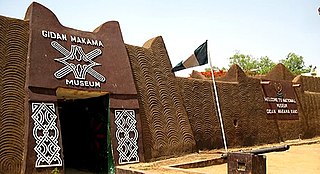
Gidan Makama Museum Kano or Kano Museum is a museum in Kano, Nigeria. This building served as temporary palace of Sarakunan Hausa of Kano before the current palace Gidan Rumfa was constructed in the 15th century The museum has a significant collections of arts, crafts and items of historic interest related to the Kano area. Located in a 15th-century historical building, which is recognised as a National Monument by the Government of Nigeria. The museum is divided into 11 galleries, each with their own centre of focus. Galleries include the Zaure or the main entrance hall with displays of traditional materials, city walls and maps of Kano, the history of statehood, Kano in the 19th century, the Civil War, economy, industry and music.
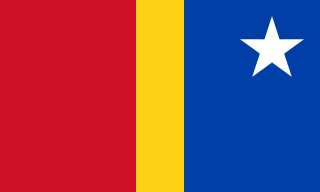
The Kano Emirate was a Muslim state in Northern Nigeria formed in 1805 during the Fulani jihad when the Muslim Hausa-led Sultanate of Kano was deposed and replaced by a new emirate which became a vassal state of the Sokoto Caliphate. During and after the British colonial period, the powers of the emirate were steadily reduced. The emirate is preserved and integrated into modern Nigeria as the Kano Emirate Council.
The Kingdom of Kano was a Hausa kingdom in the north of what is now Nigeria that was established before 1000 AD, and lasted until the proclamation of the Sultanate of Kano by King Ali Yaji Dan Tsamiya in 1349. The capital is now the modern city of Kano in Kano State.
For the Arab Hutaymi tribe, see Sulluba
The following is a timeline of the history of the city of Kano, Nigeria.

Abdalla Uba Adamu is a Nigerian academic, educator, publisher, filmmaker, ethnomusicologist, and media scholar. He hold double professorships in Science Education (1997) and Media and Cultural Communication (2012).

Ado Ahmad Gidan Dabino, MON is a Nigerian Hausa language writer, author, publisher, journalist, film producer, director and actor. He wrote for about three decades on various topics. He has published fifteen novels. He was awarded with the Member of the Order of the Niger (MON) honor on 29 September 2014 by President Goodluck Ebele Jonathan.

Hausa architecture is the architecture of the Hausa people of Northern Nigeria and Niger. Hausa architectural forms include mosques, walls, common compounds, and gates. Hausa traditional architecture is an integral part of how Hausa people construct a sense of interrelatedness with their physical environment. The architectural program used in this society is one disciplined by Islam and results in a highly organized spatial structure which is used to express features of Hausa culture.
Gates of Hausa kingdoms are gates or walls (ganuwa) that formerly enclosed Hausa kingdoms. In ancient times, each kingdom was enclosed with a wall that contained various gates. During battles, the gates were closed as a war strategy. Each gate has a name and a gatekeeper. In the past, especially at night, the gatekeeper was in charge of a single gate at all time. All of the gates are assigned to a single person today.
Jaafar Jaafar is a Nigerian journalist from Kano state and the founder of Daily Nigerian, an online publication company which published a controversial video clip showing a Kano State Governor, Abdullahi Umar Ganduje receiving $5 million bribe in October 2018.
